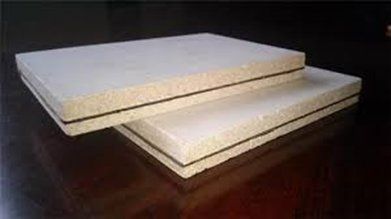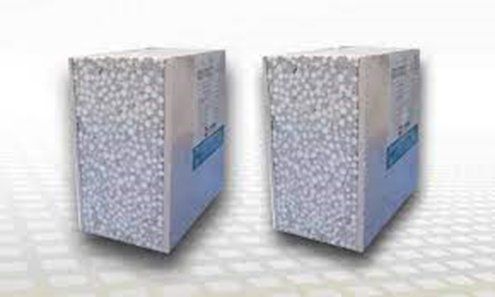1. The differences in the meaning
Sound insulation materials

Sound insulation materials refer to a type of materials, components or structures that can block the propagation of sound or weaken transmitted sound energy. They are characterized by heavier mass and higher density, usually materials without gaps, such as steel plates, lead plates, concrete walls, Brick walls etc. The sound insulation effect depends on the surface density of the material. The greater the surface density, the better the sound insulation effect. Therefore, compared with steel plates and wooden boards of the same thickness, the sound insulation effect of steel plates is much better than that of wooden boards.
sound-absorbing materials

Most sound-absorbing materials are loose and porous materials, such as slag wool, blankets, honeycomb holes, etc. The sound absorption mechanism is that sound waves penetrate deep into the pores of the material, and the pores are mostly open pores that communicate with each other internally and are subject to friction and viscous resistance from air molecules. , causing the tiny fibers to vibrate mechanically, thereby converting sound energy into heat energy. The sound absorption coefficient of this type of porous sound-absorbing material generally increases gradually from low frequency to high frequency, so it has a better sound absorption effect at high and medium frequencies. When the sound wave reaches the surface of the sound-absorbing material, the sound energy generates frictional vibrations in the air in the gaps of the sound-absorbing material, which converts the sound energy into heat energy and consumes it.
2. The differences of the uses
Sound insulation materials

Sound insulation materials or components will have different sound insulation effects due to different use situations and different testing methods. For sound insulation materials to reduce transmitted sound energy and block the spread of sound, they cannot be as porous, loose, and breathable as sound-absorbing materials. On the contrary, their materials should be heavy and dense. Materials such as steel plates, lead plates, brick walls, etc. Because this type of sound insulation material is dense, it is difficult to absorb and transmit sound energy and has strong reflection energy, so its sound absorption performance is poor. Sound insulation materials can attenuate the transmitted sound energy to 10-3 to 10-4 times or less of the incident sound energy. For convenience of expression, the insulation volume is expressed in decibels.
sound-absorbing materials

In engineering, sound-absorbing materials and sound-insulating materials have different goals and focuses. The goal solved by the absorption treatment is to weaken the repeated reflection of sound in the room, that is, to weaken the reverberation sound in the room and shorten the duration of the reverberation sound, that is, the reverberation time. ; In the case of continuous noise, this weakening is manifested as a reduction in the indoor noise level. This is when the sound source sound-absorbing materials are in the same building space. The sound-absorbing materials also attract sounds from adjacent rooms, which is equivalent to increasing the sound insulation of the building envelope.
3. The difference of characteristics
Sound insulation materials

In order to reduce the transmitted sound energy and block the transmission of sound, sound insulation materials cannot be as porous, loose and breathable as sound-absorbing materials. On the contrary, their materials should be heavy and dense, such as steel plates, lead plates, brick walls and other materials. The requirements for sound insulation materials are that they must be dense and have no pores or gaps; they must be heavy. Because this type of sound insulation material is dense, it is difficult to absorb and transmit sound energy and has strong reflection energy, so its sound absorption performance is poor.
sound-absorbing materials

In order to reduce the transmitted sound energy and block the transmission of sound, sound insulation materials cannot be as porous, loose and breathable as sound-absorbing materials. On the contrary, their materials should be heavy and dense, such as steel plates, lead plates, brick walls and other materials. The requirements for sound insulation materials are that they must be dense and have no pores or gaps; they must be heavy. Because this type of sound insulation material is dense, it is difficult to absorb and transmit sound energy and has strong reflection energy, so its sound absorption performance is poor.
Our Products
The composite sound-absorbing honeycomb wall panel produced by Qingdao Achieving has more advantages than other sound-insulating materials (simple sound-insulating cotton). The double-sided composite feature can customize the surface material according to the customer's requirements. The honeycomb structure not only has excellent sound-absorbing performance, but also is versatile.


With heat preservation function. Sound-absorbing cotton can be compounded inside the honeycomb panel. Because the honeycomb core in the panel is divided into many closed chambers, it blocks the air flow, hinders the sound waves, and increases the sound absorption coefficient. Because there are small grids separated inside the honeycomb panel. The sound propagation is blocked and the attraction effect is good. As the honeycomb core board adhered to the sandwich structure, it bears pressure in the tangential direction. These dense honeycombs that restrain each other are like many small I-beams, which can disperse the pressure from the direction of the panel and make the board evenly stressed.